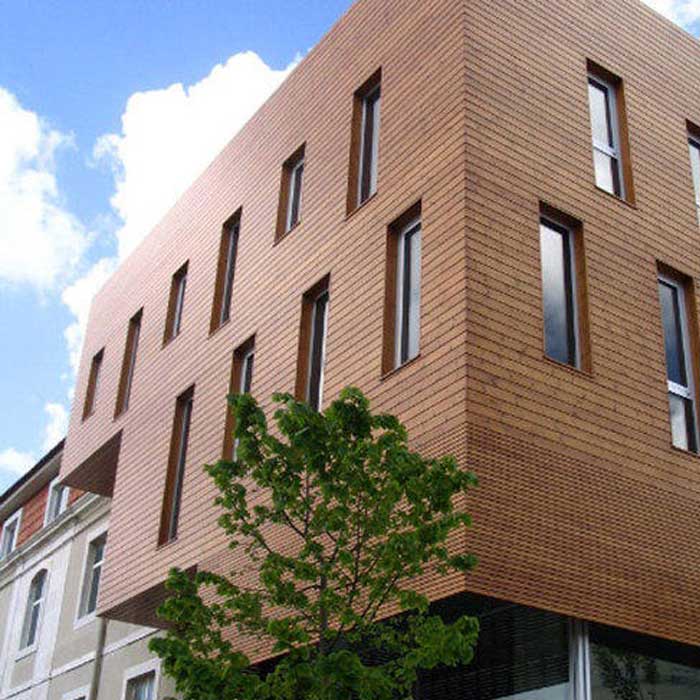
Exterior cladding refers to the protective and decorative layer applied to the outside of a building to shield it from the elements and enhance its aesthetic appeal. This layer can be made from a variety of materials, such as wood, vinyl, brick, stone, metal, or composite materials. Exterior cladding serves as a crucial component of a building’s envelope, helping to regulate temperature, provide insulation, and improve weather resistance. It also plays a significant role in defining the architectural style and character of a structure, contributing to its overall design and visual impact.
Exterior Cladding
- Residential Buildings: Exterior cladding is commonly used in residential construction to protect homes from weather elements, enhance curb appeal, and improve energy efficiency. Materials like vinyl siding, brick veneer, wood, or fiber cement siding are popular choices for residential exteriors.
- Commercial Buildings: Cladding materials such as metal panels, glass curtain walls, or composite materials are frequently used in commercial buildings to create a modern and sleek appearance. Exterior cladding can help commercial structures stand out and convey a professional image.
- Educational Institutions: Schools and universities often utilize exterior cladding to enhance the durability and aesthetics of their buildings. It can also contribute to creating a conducive environment for learning.
- Hospitality Sector: Hotels, resorts, and restaurants use exterior cladding to create inviting facades that attract guests and visitors. Cladding materials can vary from natural stone to metal panels, depending on the desired aesthetic.
- Retail Establishments: Retail buildings often incorporate exterior cladding to showcase their branding, attract customers, and create visually appealing storefronts. Cladding materials like glass, aluminum, or composite panels can be used to achieve different design effects.
- Industrial Facilities: Industrial buildings benefit from exterior cladding for protection against harsh environments, insulation, and maintenance of structural integrity. Materials like corrugated metal panels or precast concrete are commonly used for industrial exteriors.

Exterior cladding may not be something that you give a lot of thought, but it is what keeps a building safe when weather happens. It is the exterior wall covering that protects all the interior components of a house. The cladding is a critical choice in how a building holds up for the long term and how much upkeep will be needed to maintain it. Today’s cladding choices are more varied than ever, offering better technical protection but also more aesthetic options.

















